Many of us occasionally need a lens of power higher than 2X. Currently, best lenses only reach 1.7X, and higher power converter lenses are not often seen. Frequently mentioned high power converter lenses in the Panasonic FZ community are Raynox DCR-2020pro 2.2X, Olympus TCON-300S 3X, and Tokina 3X. One may also stack two converters together to yield a higher power one. See here for the details. But, stacking lenses can reduce image quality. So, the question is: is it worth buying a 3X lens instead of using stacked lenses? This page tries to compare the Olympus TCON-300S, Tokina 3X, and a combo of stacked an Olympus TCON-17 and a B-300. The comparison result, briefly, is that in terms of image quality stacking TCON-17 and B-300 together is better than TCON-300S, and the Tokina 3X is poor. This results reported here should also apply to FZ-10, FZ-20 and FZ-50.
The 3X lenses compared are Olympus TCON-300S 3X, Tokina 3X, and an Olympus TCON-17 1.7X and an old Olympus B-300 1.7X stacked together. The stacked lenses produces a converter of power 2.89X = 1.7×1.7, slightly less than 3X.
The Olympus TCON-300S 3X was discussed here. Note that due to the incompatible mounting mechanism of the TCON-300S, it is very difficult to ensure the lines of view of the TCON-300S and of the camera being identical. I tried to be very careful; however, discrepancies did occur.
The Tokina 3X comes with five step rings and the supplied 55-52 step-down ring is needed to mount the lens on a FZ-30. Please see the images below for the lens.
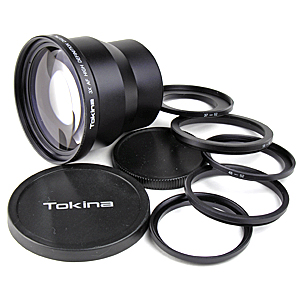
|
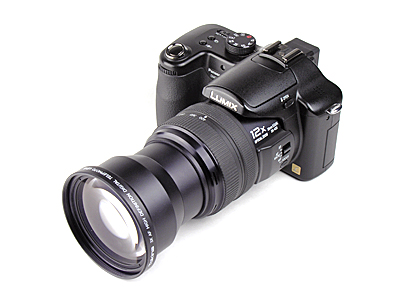
|
To compare if it is worth of buying a 3X lens in terms of image quality, lens stacking technique is also used. The stacked lenses are a TCON-17 1.7X and an old Olympus B-300 1.7X. These two lenses were choosing because the TCON-17 1.7X is one of the most popular converter lenses with very high performance/cost ratio. Unfortunately, none of the TCON-17 and B-300 has a front thread, and, as a result, a 72-55 step-down ring is used. The 72mm end of this ring can fit into the front of TCON-17 nicely, and the B-300 uses the 55mm thread and can be hand-held in front of the TCON-17 easily. Since the 72mm end does not fit the inner tube of the lens perfectly, some off center displacement is possible. However, I personally do not see a significant impact on image quality.
It is difficult to maintain shooting parameters in an uniform way because the Olympus TCON-300S has a higher light loss rate than the Tokina 3X and stacking lenses have. The testing images were shot with low contrast, sharpness and saturation. The camera was set to the aperture priority mode at F5.6 and let the camera to choose a shutter speed. Due to light loss of the TCON-300S and stacked lenses, exposure compensation values of +2/3 EV, +1/3 EV and -1/3 EV were also used. White balance was auto, and image stabilization was on because of wind and because the tripod hole of TCON-300S's bracket is very close to the camera, which has a potential to produce some camera shake. The images shown here are the best results from the batches.
I choose a scene used for comparisons many times, the old Copper Harbor lighthouse. Since the distance between the lighthouse the camera position is larger than one mile, it is a good measurement of the image quality of the each lens focused at infinity.
| Olympus TCON-300S 3X |
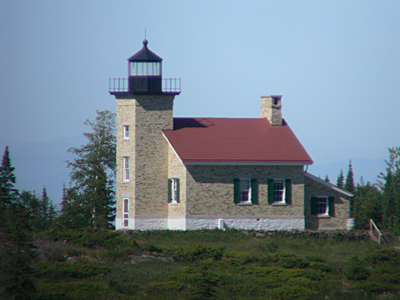
|
| Tokina 3X |
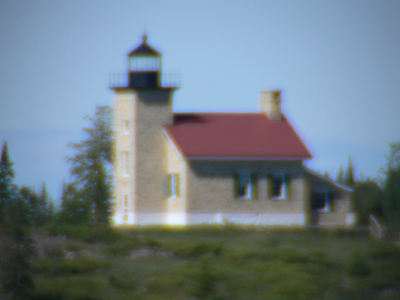
|
| Stacked Lenses 2.89X |
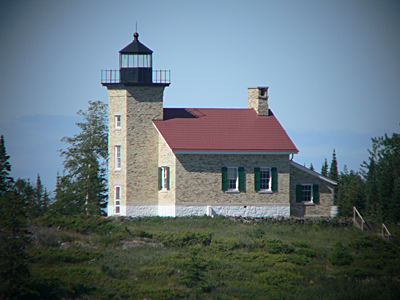
|
| Click on the image to download the original size image | |
From these three images, it is obvious that the Tokina 3X is no comparison. In fact, even in bright sun light, my FZ-30 had difficulty to focus with the Tokina 3X because image contrast is very low and because there is nearly no details for the AF system to focus. Yes, the image by the Tokina 3X is blurry; however, my FZ-30 did show the camera is in focus! It is rare to see a lens from a well-known lens maker can perform like this!
The following shows the windows of the lighthouse, which is slightly off center. They are 600×600 crops from the original images. It is very clear that the stacking lenses technique offers the best sharpness. This is followed by the Olympus TCON-300S; however, the details become blurry making the brick wall not very well-defined. It should not be surprised that the Tokina 3X performed very poorly, whose image has no detail and full of chromatic aberration.
| Olympus TCON-300S 3X | 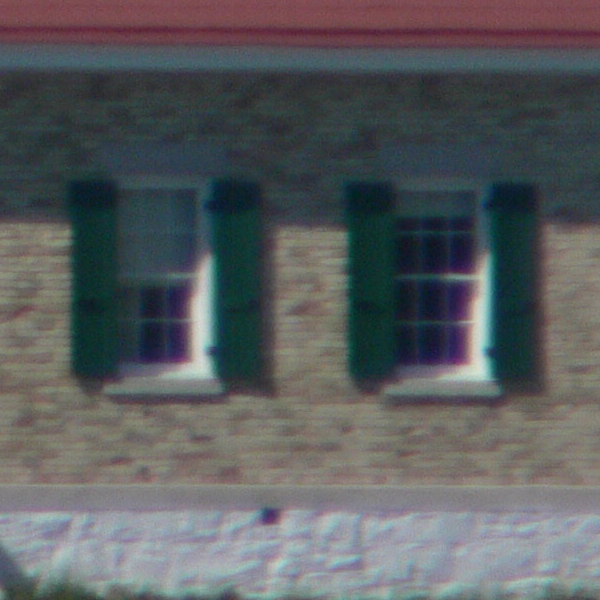
|
| Tokina 3X | 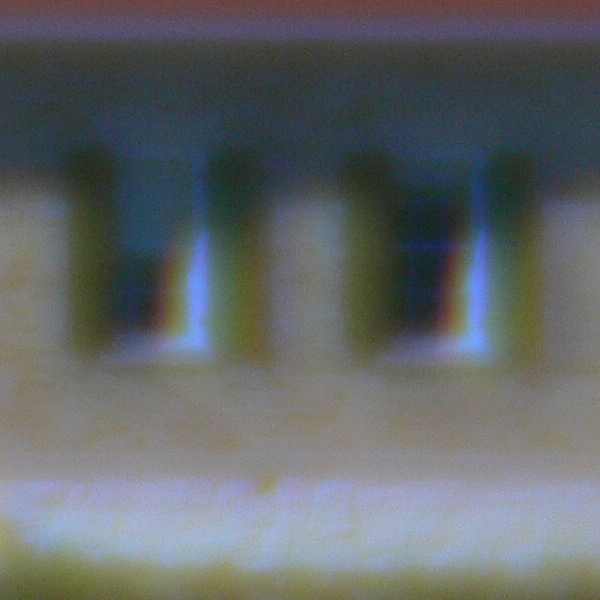
|
| Stacked Lenses 2.89X | 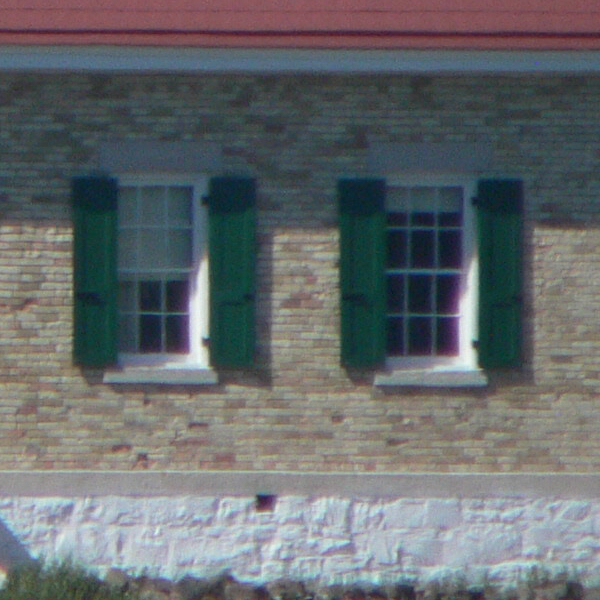
|
The lighthouse tower is in a high contrast area and can easily reveal chromatic aberration of a lens. The following are crops of the light tower portion of the original images. Again, the stacking lenses technique produces the best result. The image is fairly sharp and has less chromatic aberration than that of the TCON-300S. The Tokina 3X, however, is interesting. Although details are blurred and show bad chromatic aberration and low contrast, the lighthouse tower has a reasonably good "shadow" definition. However, the image seems to be taken a special effect filter!
| Olympus TCON-300S 3X | 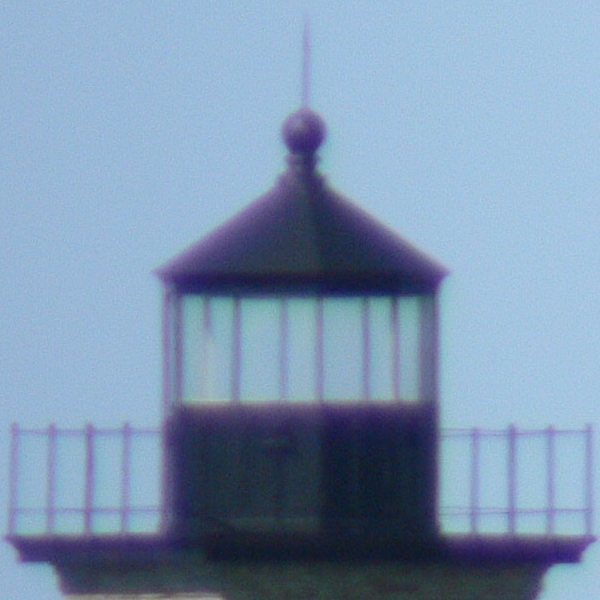
|
| Tokina 3X | 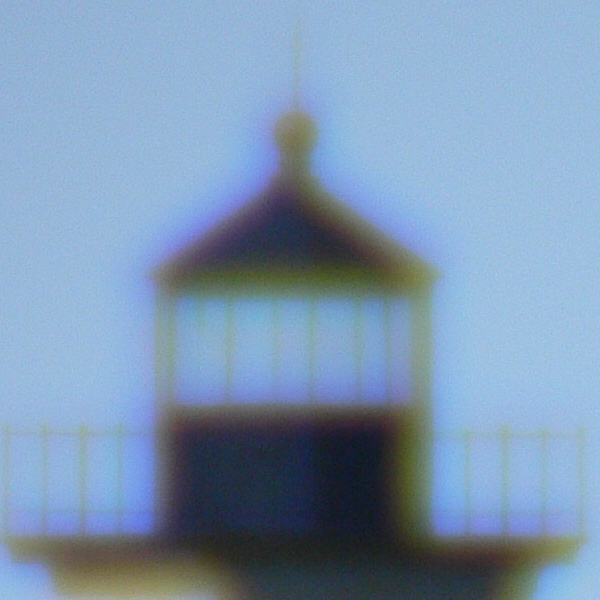
|
| Stacked Lenses 2.89X | 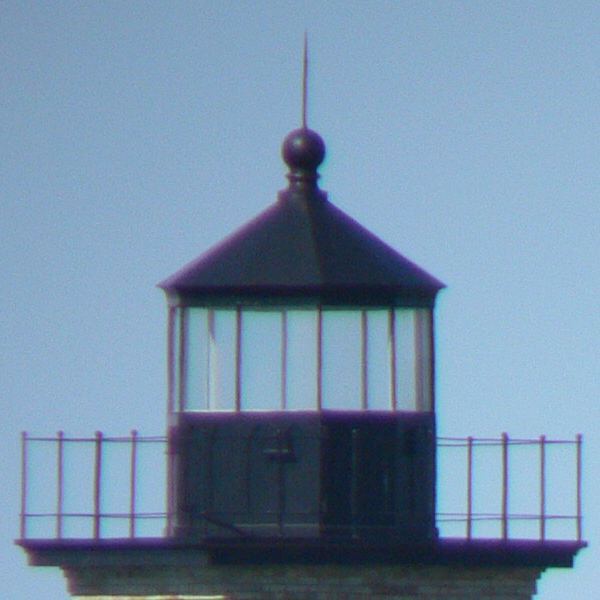
|
The following are crops from the right edge of the original images. The stacking lenses technique still wins for the edge area. The TCON-300S' result is not as good; however, the Tokina 3X shows a poor watercolor-like effect.
| Olympus TCON-300S 3X | 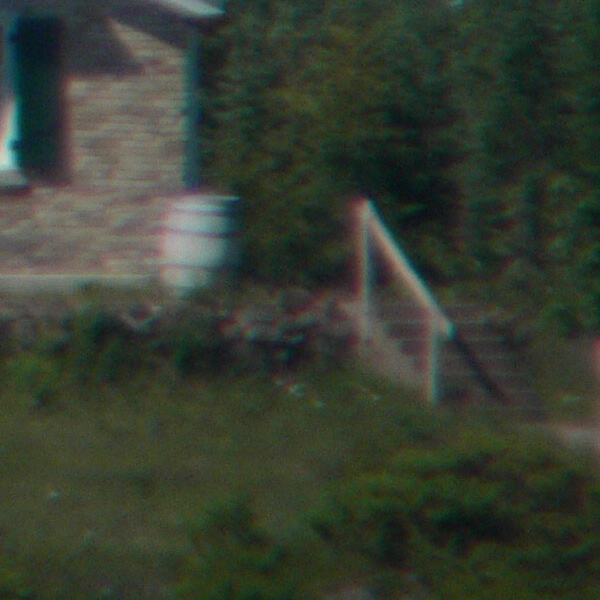
|
| Tokina 3X | 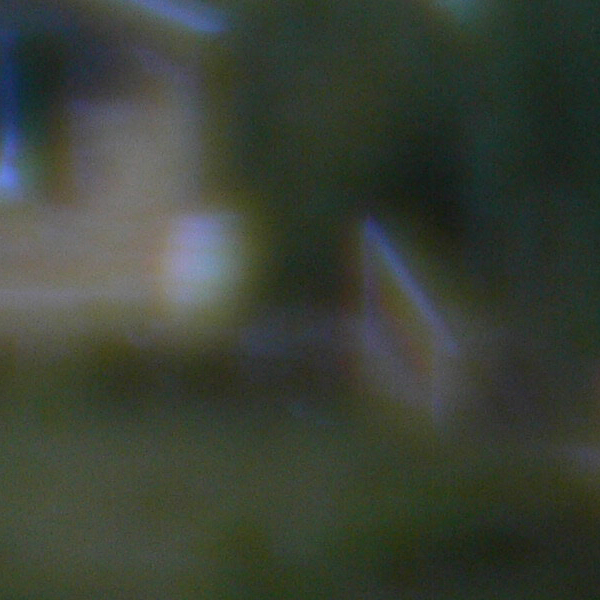
|
| Stacked Lenses 2.89X | 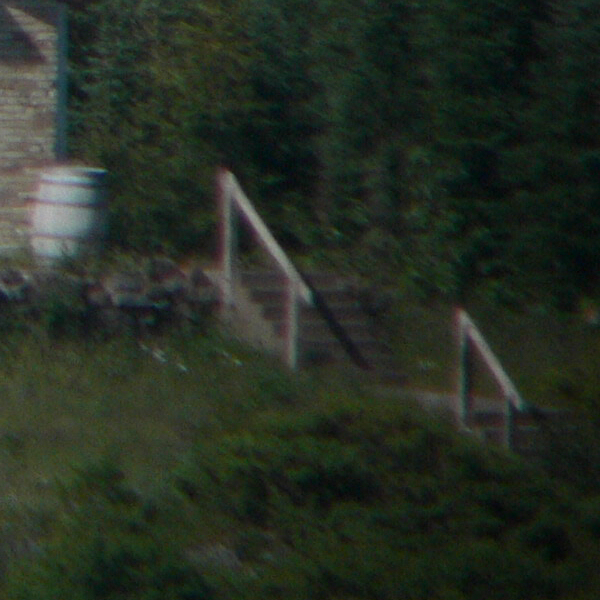
|
To make sure the above findings are correct, I used a second scene as a verification. The camera position and the ship is about one mile away. The rear end of the ship is placed at the center on purpose so that the words can be used as a test target. The images below were taken with a Panasonic FZ-30 at 420mm, a Tokina 3X and the stacked lenses (i.e., TCON-17 and B-300),
| Panasonic FZ-30 at 420mm | 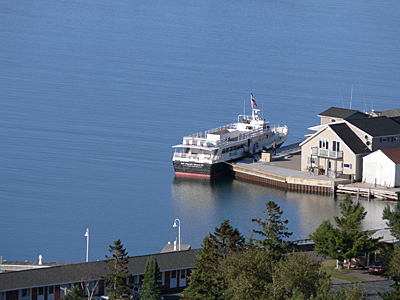
|
| Tokina 3X | 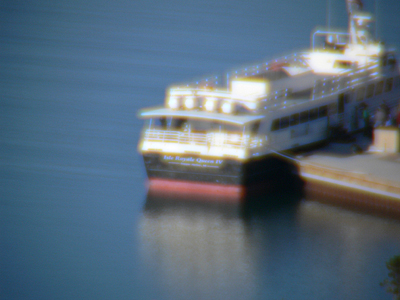
|
| Stacked Lenses 2.89X | 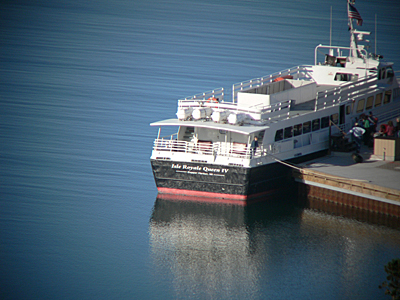
|
The following shows the center 800×600 crops of the original images. It still shows the same conclusion that stacking lenses technique is much better than the Tokina 3X. In terms of the definition of the words in the image, Tokina 3X is really not that bad; however, aberrations, chromatic aberration included, is so bad that makes the definition nearly un-recognizable.
| Panasonic FZ-30 at 420mm | 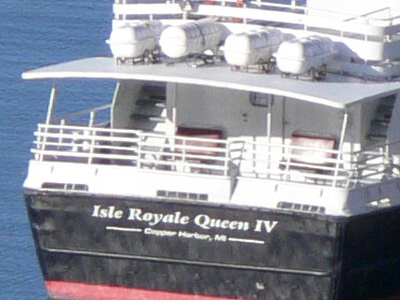
|
| Tokina 3X | 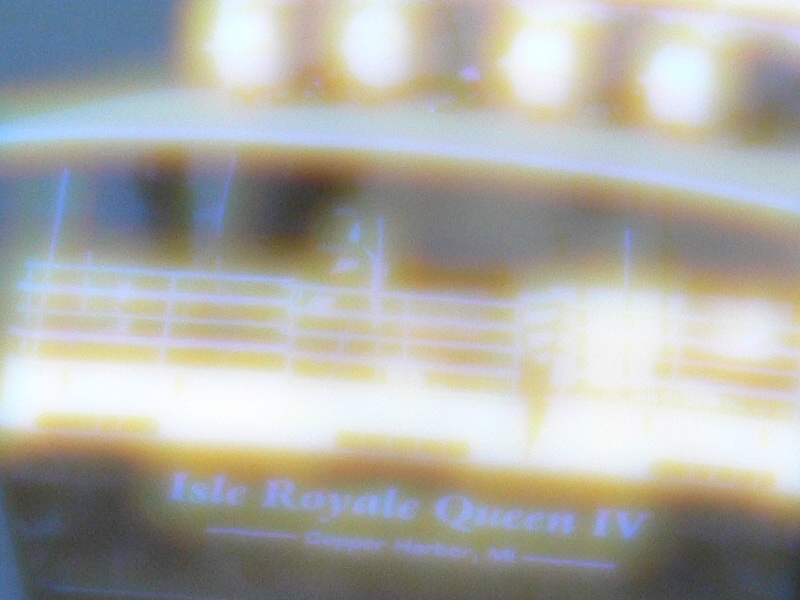
|
| Stacked Lenses 2.89X | 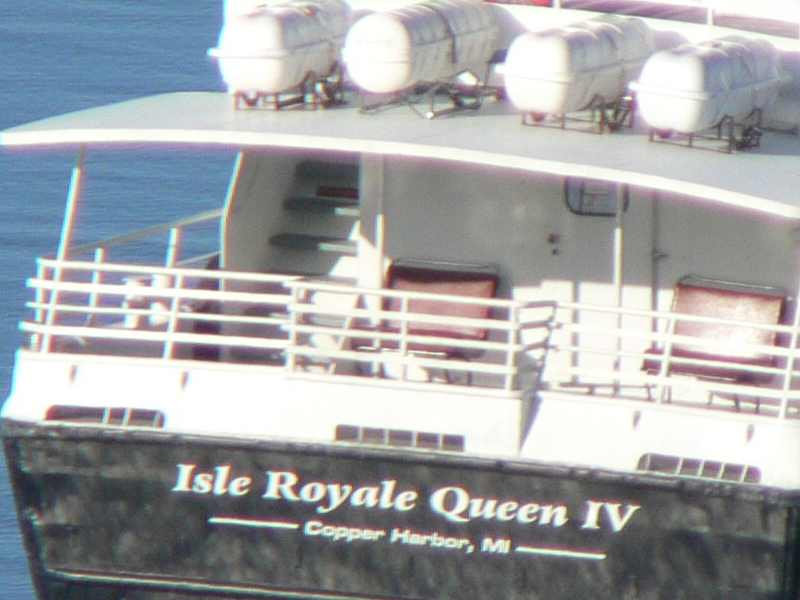
|
My conclusion is very simple (I am sure you would have the same conclusion once you see the images): Stacking a TCON-17 and B-300 yielded the best result, followed by the TCON-300S. Performance of the Tokina 3X is unacceptable. Therefore, if you wish to have a 3X teleconverter, a reasonable investment may be two TCON-17's, a 72-55 step-down ring, and some way to mount the 72mm end into one of the TCON's front end. Hand-holding is good enough if the camera is on a sturdy tripod. While there are better combinations (e.g., the Nikon TC-E17ED), the two TCON-17 option is certainly the cheapest to yield very good image quality.
The Olympus TCON-300S usually is available on eBay for less than $200 USD, not extremely expensive. However, one must consider the following three points carefully before buying: (1) image quality of TCON-300S on a FZ-30 is not as good as the two TCON-17 option, (2) the TCON-300S alone is perhaps more expensive than two TCON-17's, and (3) TCON-300S requires manual focusing while the TCON-17 does not. A major problem with the two TCON option is a slightly worse light fall-off at corners than those of the TCON-300S and Tokina 3X.
With the above comparison, I guess the Tokina 3X is out of the equation!